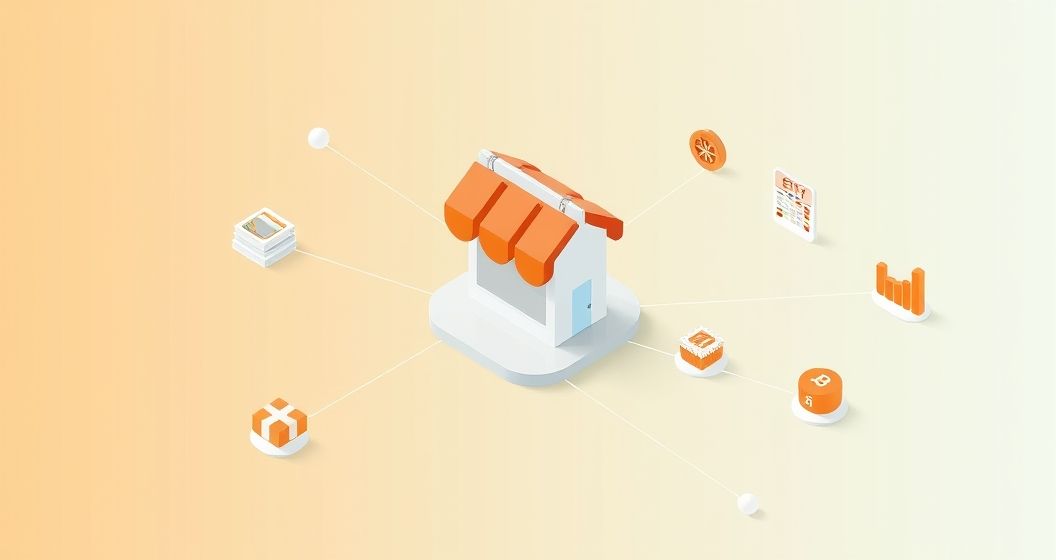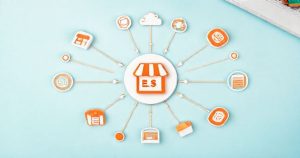In the dynamic world of online retail, Etsy sellers constantly seek innovative ways to optimize their operations and expand their reach. Etsy integrations represent a powerful solution, connecting an Etsy shop with various third-party applications and services. These tools are designed to automate mundane tasks, streamline workflows, and provide valuable insights, ultimately freeing up sellers’ time to focus on creation and customer engagement. Understanding how to leverage these integrations effectively is crucial for any seller aiming for sustainable growth and improved profitability in a competitive marketplace.
Understanding Etsy Integrations: Tools for Business Growth
Etsy integrations are software connections that link your Etsy store to other applications, creating a more cohesive and automated business ecosystem. These connections allow data to flow seamlessly between platforms, eliminating manual data entry, reducing errors, and improving overall operational efficiency. From managing inventory across multiple sales channels to automating shipping processes and simplifying accounting, integrations serve as the digital backbone for modern e-commerce businesses. They are essential for sellers looking to scale their operations without disproportionately increasing their workload.
Key Categories of Etsy Integrations and Their Benefits
The landscape of Etsy integrations is diverse, offering solutions tailored to nearly every aspect of running an online shop. Identifying the right tools for your specific business needs can significantly impact your daily operations and long-term strategic goals. Each category addresses distinct challenges faced by Etsy sellers, providing specialized functionality to enhance performance and customer satisfaction. Exploring these various types helps sellers make informed decisions about their tech stack.
Streamlining Shipping and Fulfillment: Boost Operational Efficiency
Shipping integrations are among the most popular and impactful tools for Etsy sellers. These platforms connect directly with major carriers, allowing sellers to generate shipping labels, track packages, and manage returns with ease. They often offer discounted shipping rates and batch label creation, saving both time and money. By automating these processes, sellers can reduce the risk of human error, improve delivery times, and provide a more professional and reliable shipping experience for their customers. This efficiency directly contributes to positive buyer feedback and repeat business.
Effective Inventory Management: Preventing Stockouts and Overstocking
For sellers managing multiple products or selling across various platforms, inventory management integrations are indispensable. These tools automatically sync stock levels between Etsy and other sales channels, preventing overselling or stockouts. They can also track product variations, monitor raw material inventory, and provide insights into sales trends. Accurate inventory data ensures that customers can always purchase available items, while sellers can make informed decisions about restocking and production schedules. This level of control is vital for maintaining customer satisfaction and optimizing cash flow.
Simplifying Accounting and Bookkeeping: Gaining Financial Clarity
Financial management can be a daunting task for many small business owners. Accounting integrations link your Etsy sales data directly to bookkeeping software, automating transaction recording, expense tracking, and revenue reporting. These tools help sellers reconcile their income and expenses, categorize transactions for tax purposes, and generate crucial financial reports. By streamlining these processes, sellers can save hours of manual data entry, minimize accounting errors, and gain a clearer understanding of their business’s financial health, facilitating better decision-making.
Powering Print-on-Demand (POD) and Dropshipping: Expanding Product Offerings
Integrations for print-on-demand and dropshipping services allow Etsy sellers to expand their product catalog without holding any physical inventory. These platforms connect an Etsy shop directly to a supplier, automating order fulfillment from production to shipping. When a customer places an order, the integration sends the details to the supplier, who then prints or packs the item and ships it directly to the buyer. This model significantly reduces overhead costs, minimizes storage needs, and enables sellers to experiment with new product designs and niches with minimal financial risk, fostering greater innovation.
Enhancing Marketing and Customer Relationship Management (CRM): Engaging Buyers
Marketing and CRM integrations help Etsy sellers build stronger relationships with their customers and promote their products more effectively. These tools can automate email campaigns, schedule social media posts, and manage customer inquiries. By centralizing customer data and communication, sellers can personalize marketing messages, offer targeted promotions, and track engagement metrics. Improved customer interaction can lead to higher conversion rates, increased customer loyalty, and valuable word-of-mouth referrals, all of which are critical for sustainable business growth.
Multi-Channel Selling and Cross-Platform Syncing: Reaching Wider Audiences
Many Etsy sellers expand their business beyond a single platform. Multi-channel integrations enable sellers to manage their listings, inventory, and orders from Etsy alongside other marketplaces or their own e-commerce websites (e.g., Shopify, Squarespace) through a single dashboard. This centralization saves immense time by avoiding redundant data entry and ensures consistency across all sales channels. By streamlining operations across various platforms, sellers can significantly broaden their market reach and attract a more diverse customer base without added operational complexity, enhancing overall market presence.
Choosing the Right Etsy Integration: A Strategic Approach
Selecting the most suitable Etsy integrations requires careful consideration of your specific business needs, budget, and long-term goals. Begin by identifying your biggest pain points or areas where you spend the most time. Research tools that directly address these challenges, paying attention to features, pricing models, and user reviews. Evaluate compatibility with your existing systems and consider the ease of setup and ongoing maintenance. A strategic choice will be scalable with your business, offer reliable support, and provide clear value for its cost, ensuring a positive return on investment.
Implementing Integrations: Best Practices for Success
Once you’ve chosen an integration, a smooth implementation process is key to maximizing its benefits. Start by thoroughly reading the setup guides and tutorials provided by the integration service. Test the connection with a few sample orders or data entries to ensure everything is syncing correctly before fully integrating it into your daily workflow. Regular monitoring of the integration’s performance and data accuracy is also crucial. Taking a phased approach and addressing any issues promptly will help ensure a seamless transition and prevent potential disruptions to your Etsy business operations.
Overcoming Common Challenges with Etsy Integrations: Troubleshooting Tips
While Etsy integrations offer significant advantages, sellers might occasionally encounter challenges such as data synchronization errors, compatibility issues, or a steep learning curve. When problems arise, the first step is to check the integration’s status page or support documentation for known issues. Often, a simple reconnection or a settings adjustment can resolve minor glitches. For more complex problems, reaching out to the integration provider’s customer support team is advisable. Proactive communication and understanding the tool’s limitations are essential for effective troubleshooting and maintaining smooth operations.
The Future of Etsy Integrations: Evolving Opportunities
The realm of Etsy integrations is constantly evolving, with new tools and enhanced functionalities emerging regularly. As e-commerce technology advances, sellers can expect even more sophisticated automation, AI-powered insights, and seamless connections across various platforms. Staying informed about these developments can provide a competitive edge, allowing sellers to adapt their strategies and leverage the latest innovations. The continuous evolution of integrations underscores their growing importance as fundamental components for any Etsy business aspiring to achieve sustained growth and efficiency in an ever-changing digital landscape.
Conclusion: Optimizing Your Etsy Business with Strategic Integrations
Etsy integrations are not just supplementary tools; they are foundational elements for building a resilient, efficient, and scalable online business. By strategically implementing solutions for shipping, inventory, accounting, and marketing, sellers can automate repetitive tasks, reduce operational costs, and significantly enhance their customer experience. These integrations empower sellers to reclaim valuable time, allowing them to focus on creativity and strategic growth rather than administrative burdens. Embracing the right integrations is a proactive step toward realizing the full potential of your Etsy shop and ensuring its long-term success.





